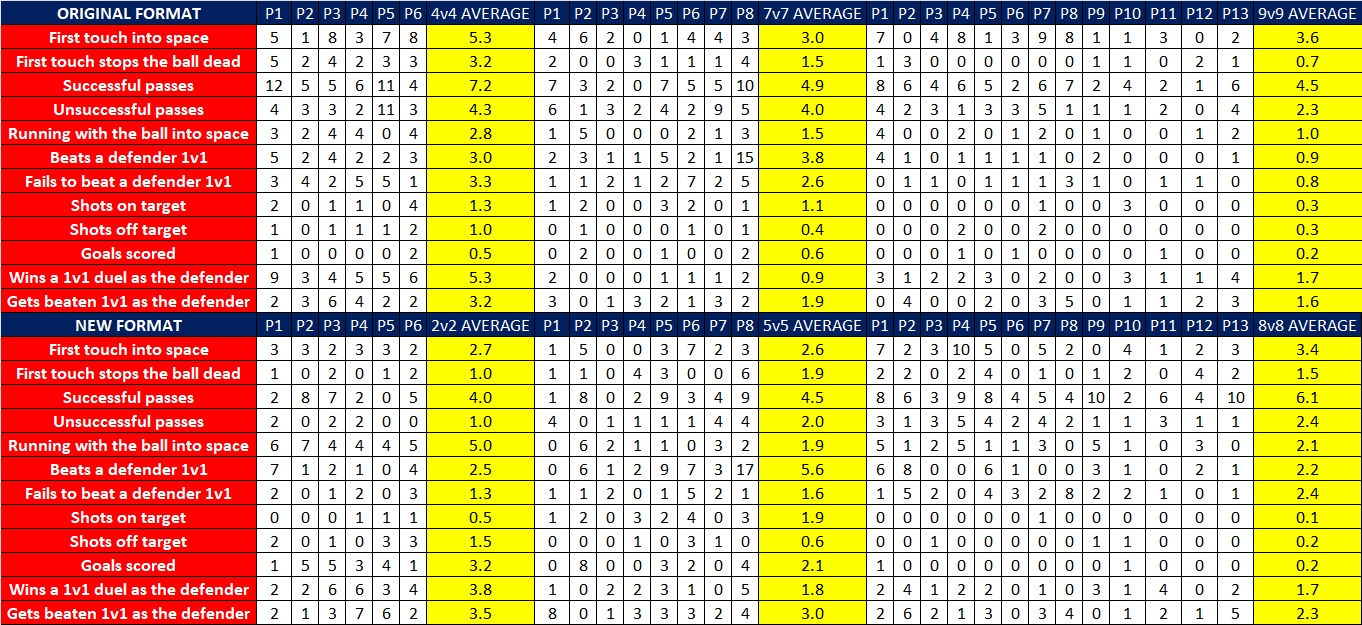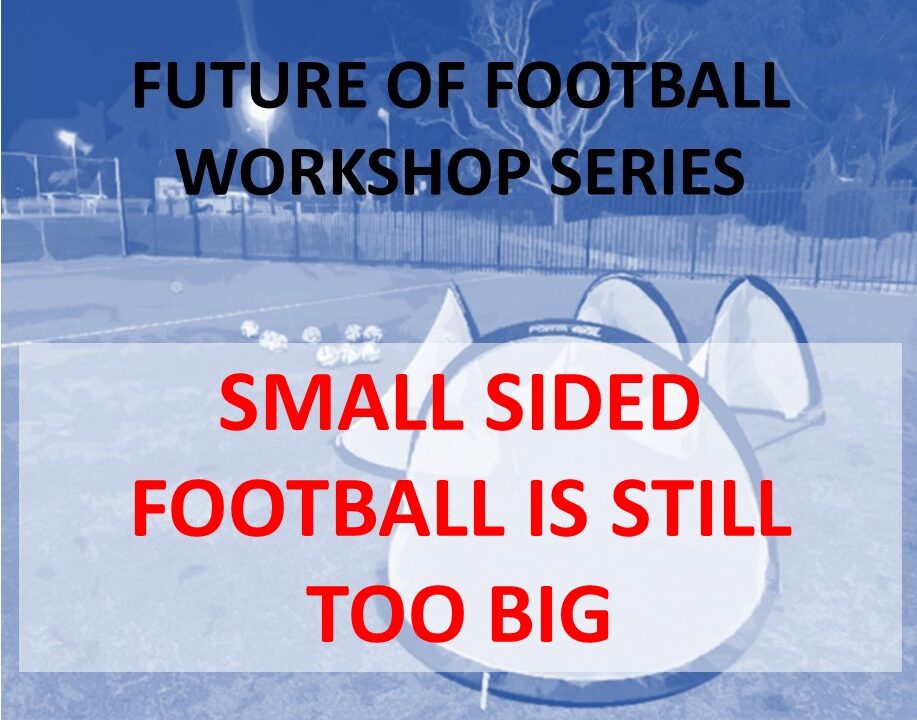MWFA recently ran a series of interactive and special workshops for coaches interested in where the future of football is heading, especially in youth development. There are people’s opinions, and there is logical debate, but sometimes even these are not enough for some people to be convinced. To resolve this dilemma, we conducted some football ‘experiments’ to prove how certain things should be approached using actual grassroots players, factual data and first hand experiences.
In this second workshop, the theme was: “SMALL SIDED FOOTBALL IS STILL TOO BIG”.
We had several groups initially playing in the current official FA formats for their age group, and then later trying more modern formats with different numbers of players and rules.
The change in formats meant that:
- U7s went from 4v4 and a small goal each end, playing two halves of 10mins, to
- 2v2 with 2 small goals each end and shots only permitted from the attacking half
- Playing 7 games of 3mins each before switching teammates and opponents
- With the added rule of free kicks being awarded if players booted the ball with no intent on controlling it
- U9s went from 7v7 including goalkeepers in medium size goals, playing two halves of 12mins, using a formation and throw-ins policed firmly, to
- 5v5 with 2 small goals each end and shots only permitted from the attacking half OR goalkeepers in medium size goals (both were used)
- Playing 4 games of 6min each before switching teammates and opponents, without formations (everyone could attack and defend)
- Removing throw-ins in favour of kick-ins, with the added rule of free kicks being awarded if players booted the ball with no intent on controlling it
- U11s went from 9v9 including goalkeepers in medium size goals, playing two halves of 12mins, using a formation and throw-ins policed firmly, to
- 8v8 with goalkeepers in medium size goals
- Playing 4 games of 6min each before switching teammates and opponents, and still using a formation
- Removing throw-ins in favour of kick-ins, with the added rule of free kicks being awarded if players booted the ball with no intent on controlling it
We measured the following stats for random individual players across each age group in the different game formats:
- First touch into space
- First touch stops the ball dead
- Successful passes
- Unsuccessful passes
- Running with the ball into space
- Beats a defender 1v1
- Fails to beat a defender 1v1
- Shots on target
- Shots off target
- Goals scored
- Wins a 1v1 duel as the defender
- Gets beaten 1v1 as the defender
We kept this experiment as objective and fair as possible by ensuring the following:
- All players who participated had equal game time and shared the goalkeeper position where relevant
- Each game format had the same duration
- We had the same number of analysts watching players in each game format and spread out evenly across the different matches happening at one time
Obviously, doing a longer term comparison would be better, but the results even from just one night were very insightful. Note that players were not coached at any point, as our objective was to see how the players would respond naturally to each game format.
The raw data is shown in the following table:

What we can see is that U7s had a slight decrease in the number of positive touches / involvements (26.5 to 23.2 on average) but a more than 50% reduction in errors (14 to 6.8 on average), and overall a similar number of overall touches / involvements (40.5 to 40 on average). It is possible that the fact we had U7s playing for 40mins in total may have caused them to fatigue and reduced the intensity of their play towards the end, but the key thing is the ratio of positive actions to errors went from about 2/1 to more than 3/1.
U9s had a more than 20% increase in the number of positive touches / involvements (16.2 to 21) as well as a slightly reduced number of errors (10 to 8.5), plus an increase in the number of overall touches / involvements (26.2 to 29.5). The ratio of positive actions to errors went from just over 3/2 to just over 3/1.
U11s also had an increase in the number of positive touches / involvements (12.1 to 15.4) but also an increase in the number of errors (6 to 8.7) which in turn impacted the ratio of positive actions to errors (about 2/1 to just under 2/1), but there was a big increase of 25% in the overall number of overall touches / involvements (18.1 to 24.1).
Conclusions / Reflections / Learnings:
- Although there has been a push recently to change U12s from 11v11 on a full sized pitch to 9v9 on a smaller pitch, which is a positive step, this shows that moving forward there would also be benefits to reducing the number of players and the size of pitches across all MiniRoos age groups, which is also what has been happening in various leading European countries for many years, so we are quite far behind in Australia still (see here for further reading)
- In addition to adjusting the size and number of players, other changes would also have a positive impact on player development and experience, such as adding more goals to score into for younger age groups in particular, removing throw-ins until players reach 11v11, and reducing the emphasis on results by mixing up teams and opponents in non-competitive age groups so each match day feels more like a tournament with multiple matches with and against a mix of players
- Any big changes like this, as reasonably simple as they might look, may still require of lot of time and effort to achieve buy-in and then see them implemented, but in the meantime coaches can still take positive steps, especially if they collaborate with their opposition – why not try playing 4 games (or even 5-6 if you want to avoid having any subs) of 2v2 with U7s instead of 2 games of 4v4? Or two games of 5v5 instead of one game of 7v7 with several subs each, if there is space (or make the space!)? Why not agree to replace throw-ins with kick-ins given the game leader is usually a parent? And if games are imbalanced, instead of taking players off or letting the opposition add players and making the game unrealistic, why not mix teams up randomly and not worry about who plays for which club? Why not do that anyway even if teams are balanced? In the end, the most important thing is that all players have a positive experience, so if that can be achieved with some common sense and negotiation / collaboration, then don’t let ‘the way it has always been done’ stop you
MWFA would like to thank all of the players and coaches who participated in these workshops for their time and efforts.


